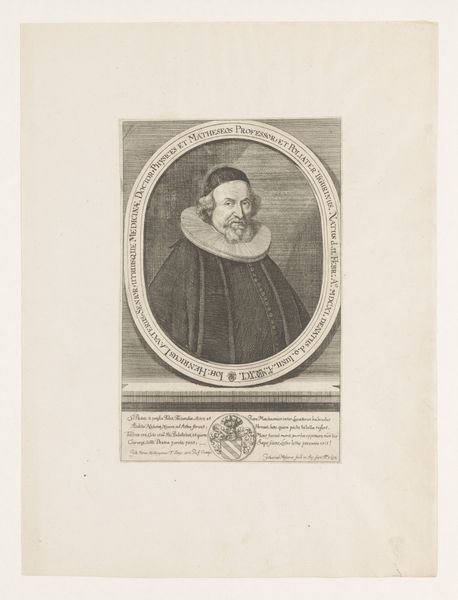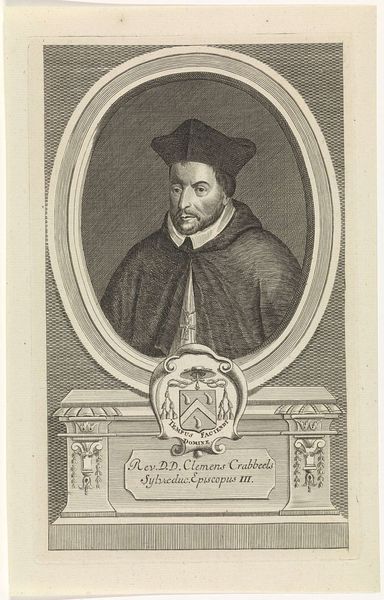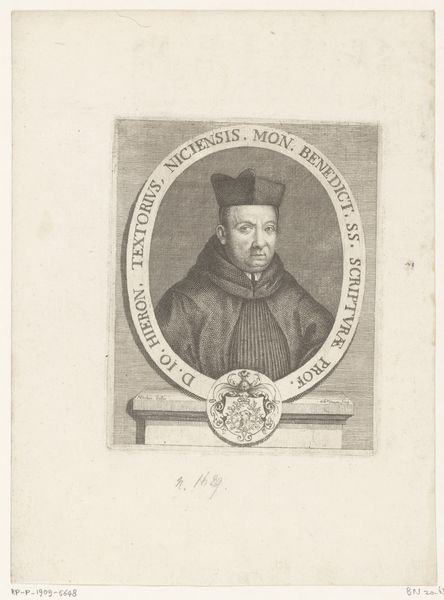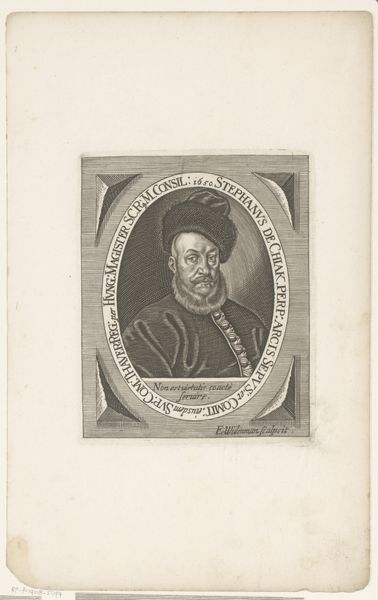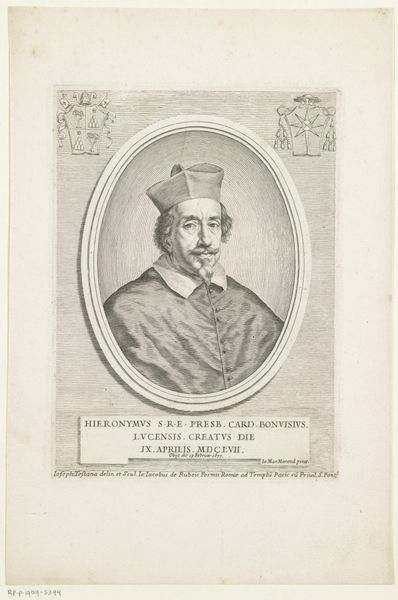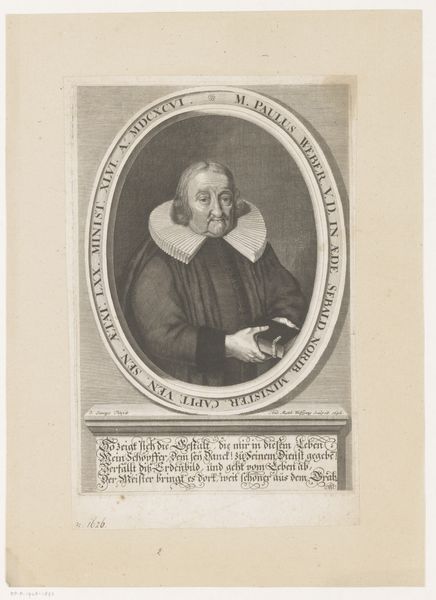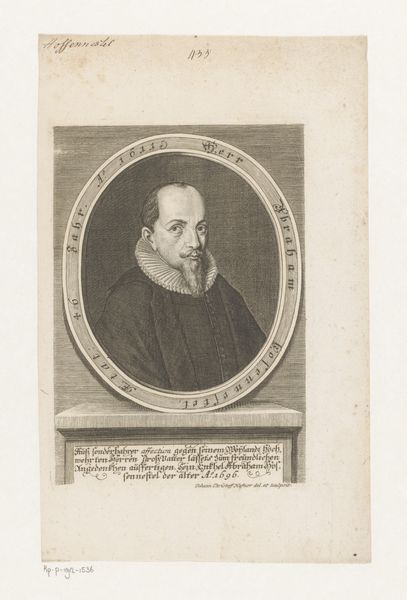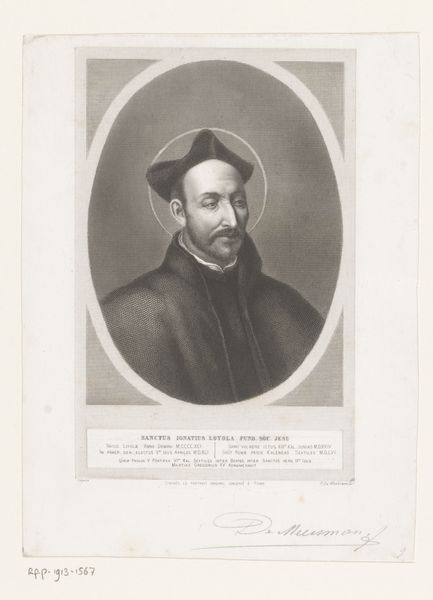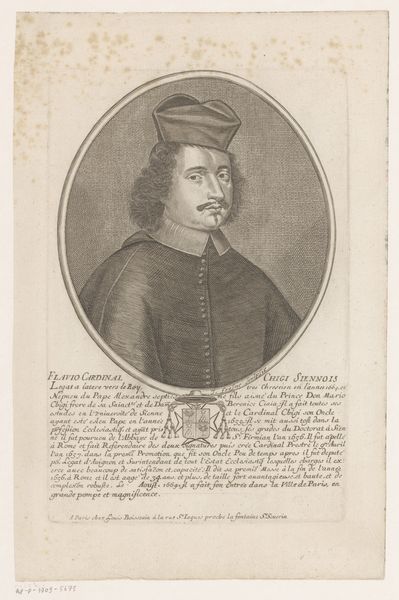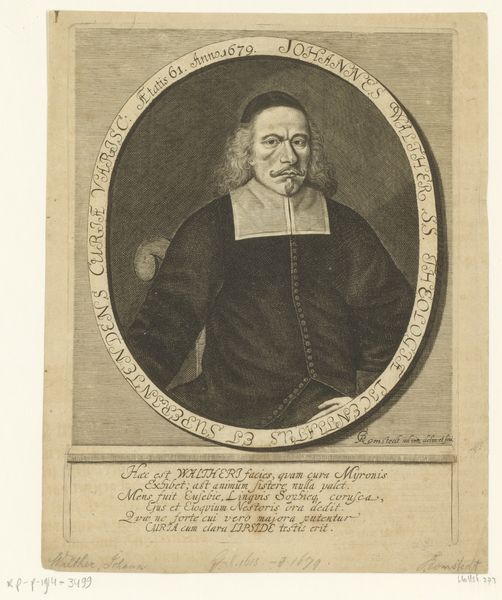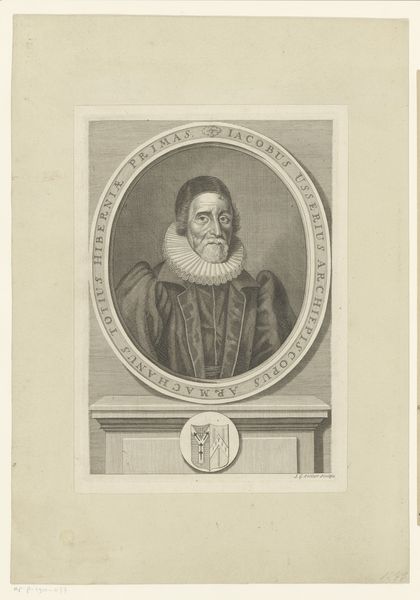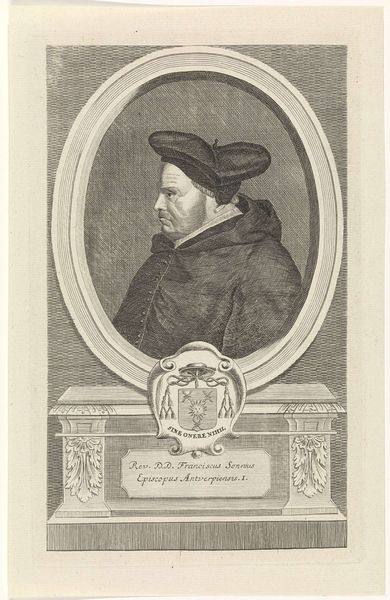
#
pencil drawn
#
photo of handprinted image
#
aged paper
#
light pencil work
#
yellowing background
#
photo restoration
#
light coloured
#
old engraving style
#
recolouration
#
ink colored
Dimensions: height 184 mm, width 115 mm
Copyright: Rijks Museum: Open Domain
Martin Esslinger created this portrait of Joachim de Watt sometime between 1793 and 1841 using a printmaking technique called etching. Etching involves coating a metal plate with a waxy, acid-resistant substance, and then drawing an image into the wax, exposing the metal. When the plate is dipped in acid, the exposed lines are eaten away, creating grooves. These grooves hold ink, which is then transferred to paper under high pressure, resulting in a print. This process allows for fine detail and subtle tonal variations, which you can see in the texture of de Watt's clothing and the contours of his face. The beauty of etching lies in its capacity to democratize image-making; it is a reproductive technique. Rather than commissioning an expensive painted portrait, likenesses could be circulated widely, subtly shifting the relationship between representation, labor, and social class. The skill lies not only in the artistry of the image, but in the craft of the printmaker. Appreciating this process enriches our understanding of the artwork.
Comments
No comments
Be the first to comment and join the conversation on the ultimate creative platform.
